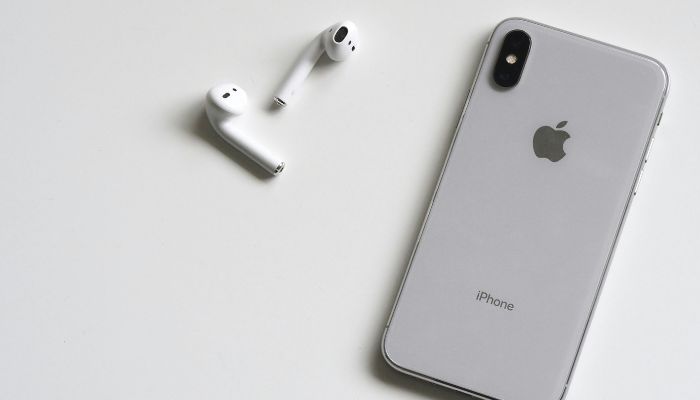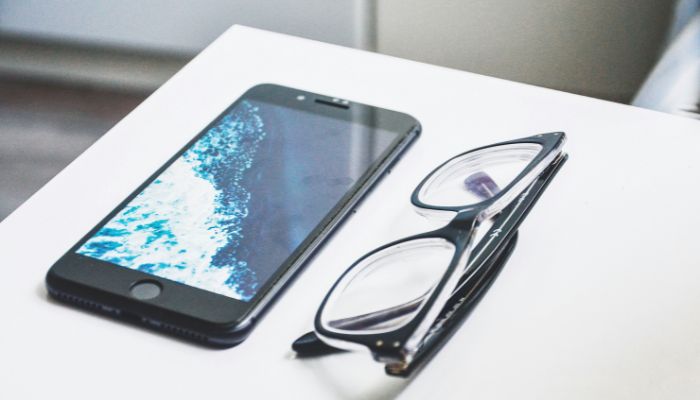
Detecting phishing on an iPhone involves several key practices. Recognize suspicious emails and messages by examining headers, hovering over links to verify URLs, and looking for grammar mistakes. Be cautious of messages employing urgency tactics. Verify website authenticity by checking for HTTPS, SSL certificates, and comparing URLs with official sites.
Use built-in iPhone security features such as Face ID authentication, Safari settings to avoid phishing websites, and two-factor authentication. Enabling these will fortify your device against cyber threats. For a comprehensive understanding of iPhone phishing detection and protection strategies, it’s crucial to explore additional guidance.
Understanding Phishing and Its Dangers
Phishing is a deceptive tactic used by cybercriminals to lure individuals into divulging sensitive information such as passwords, credit card numbers, and personal details. It is one of the most prevalent forms of cyber threats today. Phishing awareness is crucial to maintaining online safety. To further enhance security, explore iPhone features for blocking spam calls.
Cybercriminals often employ email scams, misleading messages that appear to be from legitimate sources, to trick individuals into clicking on malicious links or attachments. These fraudulent communications can lead to severe consequences, including data breaches. Once personal information is compromised, it can be exploited for financial gain or identity theft.
Email scams typically mimic trusted entities like banks, social media platforms, or online retailers, making them hard to distinguish. Understanding the dangers of phishing is essential for protecting oneself online. Recognizing the signs of phishing attempts can help individuals avoid falling victim to these schemes.
Suspicious email content, unexpected requests for personal information, and generic greetings are red flags. Staying informed and cautious can minimize risks associated with phishing. Increased phishing awareness and proactive measures are vital in combating these cyber threats.
Vigilance and education are key components in safeguarding sensitive data and ensuring a secure digital environment.
Common Phishing Tactics on Iphones

When targeting iPhone users, cybercriminals often employ sophisticated phishing tactics designed to bypass security measures and deceive victims.
- One common method involves recognizing spoofed emails. These emails appear to come from legitimate sources but contain subtle differences in addresses or content. Users must scrutinize the sender’s details and look for inconsistencies.
- Another tactic is spotting fake links. Phishers embed malicious URLs within emails or messages, leading to fraudulent websites. Always hover over links to verify their authenticity before clicking.
- Avoiding scam calls is also crucial. Scammers may impersonate trusted organizations or individuals, urging immediate action. Be wary of unsolicited calls requesting personal information or financial details. Verify callers’ identities independently if unsure.
- Identifying phishing texts is essential as well. Cybercriminals send SMS messages that seem urgent, often containing links to malicious sites. Treat unexpected texts with caution and avoid clicking unfamiliar links.
- Last, understanding social engineering tactics can prevent falling victim to phishing. Scammers exploit human psychology, using fear, urgency, or curiosity to manipulate targets. Awareness of these tactics can help users stay vigilant and avoid phishing attempts. By recognizing these common phishing tactics, iPhone users can better protect themselves from cyber threats.
Identifying Suspicious Emails and Messages
Recognizing phishing tactics is the first step; now, it’s important to focus on identifying suspicious emails and messages.
- Start by examining email headers. These can reveal discrepancies, such as unknown senders or unusual domains. Always double-check the sender address. Phishers often use addresses that mimic legitimate ones but contain slight variations.
- Next, pay attention to message links. Hover over them to see the actual URL before clicking. Suspicious links often lead to malicious sites.
- Additionally, look for grammar mistakes. Professional organizations typically avoid errors in their communications. Multiple typos or awkward phrasing can be a red flag.
- Urgency tactics are another common phishing indicator. Messages that pressure you to act immediately, such as “Your account will be locked in 24 hours,” should be treated with caution. These tactics aim to bypass your critical thinking. Learn more about the risks of an iPhone text message scam.
Verifying Website Authenticity

Ensuring website authenticity is crucial to protecting your personal information online. One of the first steps is checking URLs. Phishing sites often use addresses similar to legitimate ones but with slight alterations. Always inspect the URL for misspellings or unusual characters.
Website validation plays a significant role in confirming authenticity. Ensure the site uses HTTPS, indicated by a padlock icon in the address bar. This shows the site has an SSL certificate, which encrypts data between your iPhone and the website.
Domain verification is another essential measure. Verify the domain name by comparing it with the official site of the organization. This can prevent you from falling prey to look-alike domains designed to deceive.
Trust indicators, such as security seals from recognized organizations like Norton or McAfee, can also help in website validation. These seals often link to a verification page confirming the site’s security status.
Conducting a thorough site inspection includes checking for contact information, privacy policies, and user reviews. Authentic websites usually provide clear and accessible details about their operations. By following these steps, you can significantly reduce the risk of exposing your personal information to phishing attempts.
Using Iphone Security Features
While verifying website authenticity is a fundamental step in safeguarding your data, leveraging iPhone security features offers an additional layer of protection against phishing attacks. iPhones come equipped with a suite of built-in security tools designed to help users identify and avoid phishing scams.
- Face ID authentication: This feature ensures that only you can access your iPhone, apps, and sensitive data. It recognizes your face to grant access, preventing unauthorized users from exploiting your device.
- Safari browser settings: Safari offers settings that can help you avoid phishing websites. Enable “Fraudulent Website Warning” to receive alerts when you visit a suspected phishing site. This feature can prevent you from entering personal information on malicious websites.
- App permissions: Regularly review and manage app permissions to ensure that apps do not have access to more data than necessary. This reduces the risk of malicious apps exploiting your data.
- Two-factor authentication: Enabling two-factor authentication adds an extra layer of security to your Apple ID. This means even if someone obtains your password, they cannot access your account without a second form of verification.
Tips for Protecting Your Iphone From Phishing

Protecting your iPhone from phishing attacks requires a multifaceted approach that combines vigilance and the use of robust security practices.
First, recognizing signs of phishing is crucial. Be wary of emails or messages that urge immediate action, contain spelling errors, or come from unknown senders. These are often red flags.
Avoiding scams involves cautious behavior. Refrain from clicking on links or downloading attachments from unverified sources. Always verify the sender’s authenticity before responding or sharing any information.
Staying vigilant is essential. Regularly update your iPhone’s software to benefit from the latest security patches. Enable features like two-factor authentication to add an extra layer of protection.
Securing information on your device is another vital step. Use strong, unique passwords for different accounts and consider a reputable password manager to keep track of them. Regularly back up your data to a secure location to minimize damage in case of a breach.
Preventing attacks also means educating yourself about common phishing tactics. The more you know, the better equipped you are to identify and avoid threats. By implementing these strategies, you significantly reduce the risk of falling victim to phishing on your iPhone.
Conclusion
Understanding phishing and its associated risks is crucial for iPhone users. Recognizing common phishing tactics, scrutinizing suspicious emails and messages, and verifying website authenticity are essential steps. Utilizing iPhone security features further bolsters protection against phishing attempts. Adopting these measures can significantly reduce vulnerability to phishing attacks, thereby enhancing the overall security of personal information and devices. Consistent vigilance and adherence to security guidelines are imperative in safeguarding against evolving phishing threats.